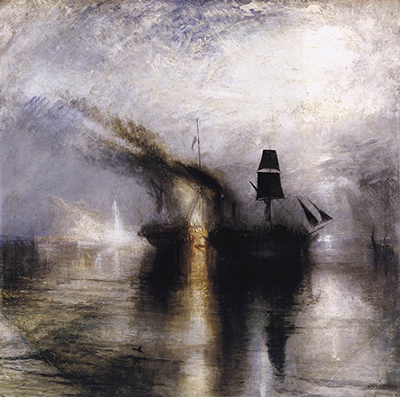William Turner painted Peace Burial at Sea in 1842. This painting was exhibited at the Royal Academy of Art in London, together with two of his other paintings Exile and the Rock Limpet and Snow Storm.
Peace Burial at Sea was painted by Turner as a tribute to his great friend and fellow painter, Sir David Wilkie. He had sadly died while travelling home via packet boat from a vacation in the Holy Land.
He was subsequently buried at sea off the Gibraltar coast. Turner painted Peace Burial at Sea, one year after his friend's death.
As well as Peace Burial at Sea being a tribute to a much loved friend, the painting is also so much more.
What Turner has managed to evoke in this work is that of the feelings of harmony and contentment, two emotions that he truly believed Wilkie lived by and represented. He wanted to convey his friend's endearing qualities on canvas.
Peace Burial at Sea is also a juxtaposition of emotions on canvas. Although the image is that of a burial at sea, a somber and reflective moment in life that celebrates an individual, the image also represents death.
So the image is both hopeful and full of despair. What emotion the observer feels is very much dependent upon what is happening in their own life, their previous life experiences and what they hope for the future.
The entire painting is constructed of cool and neutral colours, blurring both sea and sky. The strongest colour on the canvas is that of the sails that are painted in black.
This denotes the funeral boats and the solemnity of the scene. Black is always connected to the process of mounting, but many critics at the time believed that the black sails evoked a false sentimentality towards the mourning of Willie's death.
The darkness of the boats is also highlighted by the lights of the torches that are used to bring light to the body that is being lowered into the sea. This light can be viewed as that of a passage from life to death.




